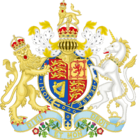Feu (land tenure) facts for kids
Feu was a very common way to own land in Scotland for a long time. It was part of a system called feudalism, which was how land was bought and sold in Scots law. This system changed when the Scottish Parliament passed a new law in 2000 called the Abolition of Feudal Tenure etc. (Scotland) Act 2000. The word "feu" comes from the Scots language and means the same as "fee" in English. England had already stopped using these types of land ownership in 1660.
Contents
History of Land Ownership in Scotland
Quick facts for kids Duplicands of Feu-duties (Scotland) Act 1920 |
|
|---|---|
| Act of Parliament | |

|
|
| Long title | An Act to amend the law relating to the payment of duplicands of feu-duties in Scotland. |
| Citation | 10 & 11 Geo. 5. c. 34 |
| Dates | |
| Royal assent | 16 August 1920 |
| Other legislation | |
| Repealed by | Abolition of Feudal Tenure etc. (Scotland) Act 2000 |
|
Status: Repealed
|
|
| Text of statute as originally enacted | |
Before 1832, only people who held land directly from the King or Queen (called "vassals of the crown") could vote in parliamentary elections for Scottish counties. This encouraged a practice called "subinfeudation." This meant that instead of selling land completely, owners would grant it to others who would become their own vassals.
Changes to Voting Rights
The Scottish Reform Act 1832 changed this. It greatly increased the number of men in Scotland who could vote, from about 4,500 to over 64,000. This made the voting system much fairer.
Land in Orkney and Shetland
In the Orkney and Shetland islands, land is still mostly owned under "Udal law." This is a very old way of owning land that comes from when these islands belonged to Norway. In the past, these lands could be changed into feus if the owner wished. They would then be held from the Crown or the Marquess of Zetland.
How Land Was Transferred
At one time, transferring land held by feu was very strange and complex. It often required people to be physically present on the land. They would even use symbolic actions, like throwing a shoe onto the earth, to show the property was being transferred. Many documents also had to be registered. However, new legislation since the mid-1800s has made this process much simpler.
The End of Feu
Many attempts were made to change the feu system over the years. Finally, it was completely ended by the Abolition of Feudal Tenure etc. (Scotland) Act 2000.
How Feu Holding Worked
In a feu holding, the person using the land made a regular payment each year. This payment could be money or goods. The King or Queen was considered the first "overlord" or "superior." Land was held from them by "crown vassals." These crown vassals could then grant their land to other people, who would become their vassals. The original crown vassals would then be called "mediate overlords" or "superiors." This process of granting land to new vassals could happen many times. A law passed in 1874 made it impossible to stop this process of subinfeudation.
Feu Payments and Forfeiture
"Casualties" were special payments made to the superior. These payments depended on certain events happening. The most important casualty was a payment equal to one year's feu-duty. This was paid by a new owner, whether they inherited the land or bought it. The Conveyancing (Scotland) Act of 1874 stopped casualties for all new feus. It also allowed people to get rid of this burden on older feus. If a vassal did not pay the feu-duty for two years, the superior could take legal action. This could lead to the "forfeiture" of the feu, meaning the vassal would lose the land.
Other Ways Land Was Held in Scotland
Besides feu, there were other ways land could be owned in Scotland:
- Booking: This was a special way of transferring land only used in the town of Paisley. It was very similar to feu.
- Burgage: This was the system used for owning land within Royal Burghs, which were special towns.
- Blench holding: This involved a very small, symbolic payment. For example, it might be a penny (Scots money) or a red rose. Often, this payment only had to be made if the superior asked for it.
- Mortification: This was a way for churches or charities to hold land. The land was granted "ad manum mortuum," which means it could not be sold. It also meant the usual payments to the superior were not required.
- Ward: This was the original way land was held in exchange for military service. It was abolished in 1747 after the Jacobite rising of 1745.
See also
| Look up feu (English) in Wiktionary, the free dictionary. |
| Look up feu (Scots) in Wiktionary, the free dictionary. |
- Fee simple
- Fee tail
- Feoffee
- Trespass for mesne profits

